Dogs
Hi Julie!
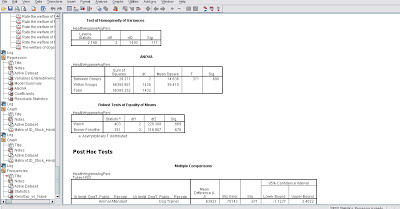
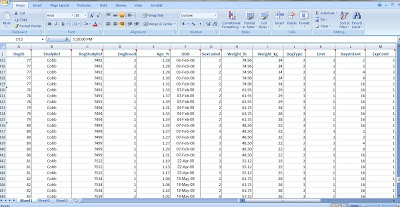
Fuelled by a ton of this:
But I did take time to notice that your cat Josh broke something new. Oh Josh!
Then she helped me raise a bunch of Shelter foster kittens until they were old enough to be adopted.
One thing about not sharing an office with Gidget any more is that it’s giving me more time to analyse all my PhD data about working dogs in kennel facilities.
I’ve been busy number-crunching this week ahead of the RSPCA Australia Scientific Seminar later this month. My presentation is titled ‘Working Like a Dog – Affectively’. I’ll be talking about how affective states (a.k.a emotions) relate to working dogs, their welfare and performance. What is the affective experience for a working dog? How can we tell? What things should we be considering to give working dogs a ‘life worth living’ (or better!) while they are working to help us humans?
Professor David Mellor will be chairing the seminar and giving a presentation titled ‘Coping, cognition and quality of life improvement’ which I’m looking forward to hearing. Mellor’s based in New Zealand and I’ve enjoyed listening to him at other conferences. I am very interested in the work he’s been involved with in translating animal welfare science into practical animal welfare standards and outcomes in collaboration with the NZ government. It’s going to be a fun day!
Mellor D. (2012). Animal emotions, behaviour and the promotion of positive welfare states, New Zealand Veterinary Journal, 60 (1) 1-8. DOI: 10.1080/00480169.2011.619047
© Mia Cobb 2012
- Working Dog Conference: Bridging The Gap Between Science And Industry
(source)Hi Julie, how great was Dr Brad Smith's guest post to us about his research investigating dingo cognition? Responsiveness to humans, tool use and conspecific reaction to death - just all kinds of awesome! I'm so glad the editors...
- Rspca Australia Scientific Seminar 2013: Recap
Hi Julie, what a week! Thanks for all that great information about The Sounds of Dogs, that was so interesting. I definitely recognise differences in the way my dogs bark. They have very different vocalisations for "strange person at the door",...
- Totally Aawsome
Hey Julie, Thanks for all that humping info – it’s humptastic!I am going to get back to you about humping in working dogs another day, as I want to give my response a whole post, which I can’t do today. Today I need to tell you about AAWS....
- Approval Endorsed! Now About That Phd...
Oh wow Julie! The things crossing your desk are pretty darn exciting, I must say! Your first peer-reviewed scientific journal publication is totally awesome! It’s a study that I really enjoyed reading about and especially like...
- Back To Basics - Let Me Introduce Myself...
Hey Julie! I'm pretty excited to revisit the whole penpal concept too! I had one when I was 10yrs old who lived in the USA (just like you!) and was named Mia (just like me!). So how about I start by telling you a bit about me? I live...
Dogs
Dogs & Cats, Cats & Working Dogs, Working Dogs & Emotions
Hi Julie!
What a busy week I’ve found myself having!
Very productive indeed, with a lot of this:

and some more of that:


Thanks for telling me about your ISHAR presentation about dogs and cats in the home. I can definitely relate to the importance of early socialisation = best chance at harmony. Take my dog Elke, for example.
As a pup, she met and spent time around mature cat Bobby (who opted to ignore her for the most part).
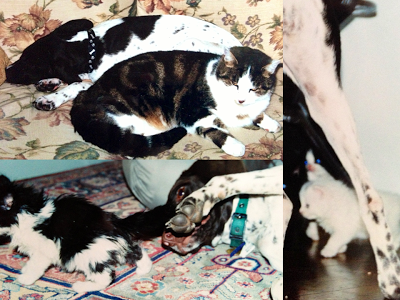 |
| Elke grew up around cats and kittens. |
By the time Tonto came to live with us as permanent family member, she was an old hand in living around cats. And when Caleb later joined us as a young adult dog, Tonto was pretty relaxed around dogs. He tended to be confident in interactions; not running away (importantly, not triggering any chase responses from our new dog).
 |
| Elke ably demonstrating in top image that a cat is not worth waking up for. |
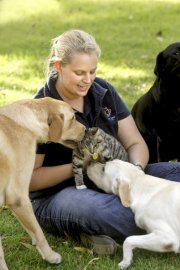 |
| Gidget and some enthusiastic GDs |
This was also true when we brought a new kennel cat into the Training Kennel and Vet Clinic facility I managed at Guide Dogs Victoria (GDV). We selected a kitten from the Shelter who was outgoing and confident around people and dogs. We then set her up in the main foyer of our facility to have a slow and positive introduction to the visiting puppies and dogs that we could control to maximise the positives for all the animals.
Gidget now plays an important role at GDV helping to desensitise the dogs to cats by reducing their level of interest and distraction. If their key learning experiences about cats with Gidget are 'boring', they associate future cats with 'boring' and will be less likely to want to chase them.
Important when you are a working Guide Dog. Or a Police Dog. Or any number of other types of working dogs. Working Dog kennel cats are really common!
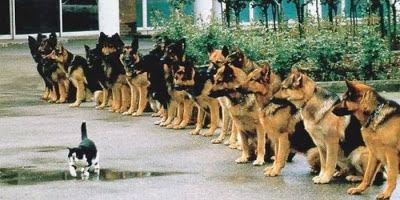 |
| (source) |
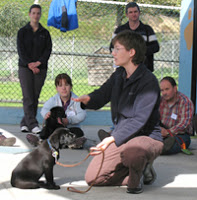 |
| GDV Puppy Class (source) |
Gidget also attends the puppy socialisation classes, wearing her harness and lead so puppies can be encouraged at an early age to stay calm around cats. A resident kennel cat also means that a friendly cat is readily available to assess a dog’s level of cat distraction or participate in training sessions to improve Guide Dog-appropriate responses to the presence of a cat.
Or help out with photo shoots around Valentine's Day. You know how it goes!
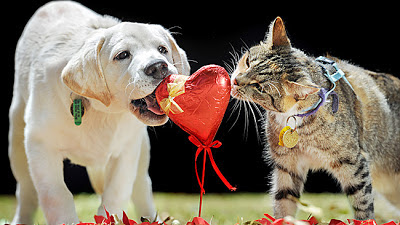 |
| (source) Gidget loves photo shoots. Even if they aren't (supposed to be) about her! |
Gidget would spend her downtime in my office, asleep next to my computer monitor. We were good workmates and I miss her jaunty greetings and blissed out purrs!
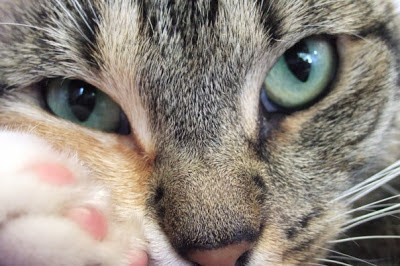 |
| My regular desktop view when working at GDV |
I’ve been busy number-crunching this week ahead of the RSPCA Australia Scientific Seminar later this month. My presentation is titled ‘Working Like a Dog – Affectively’. I’ll be talking about how affective states (a.k.a emotions) relate to working dogs, their welfare and performance. What is the affective experience for a working dog? How can we tell? What things should we be considering to give working dogs a ‘life worth living’ (or better!) while they are working to help us humans?
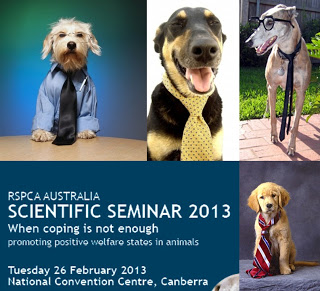 |
| RSPCA Scientific Seminar 2013 |
Speaking of fun – aren’t you at Science Online’s 2013 event this week? I’m following #scio13 on Twitter and pretending I’m there too!
Mia
Further reading:
Mellor D.J. & Bayvel A.C.D. (2008). New Zealand's inclusive science-based system for setting animal welfare standards, Applied Animal Behaviour Science, 113 (4) 313-329. DOI: 10.1016/j.applanim.2008.01.010Mellor D. (2012). Animal emotions, behaviour and the promotion of positive welfare states, New Zealand Veterinary Journal, 60 (1) 1-8. DOI: 10.1080/00480169.2011.619047
© Mia Cobb 2012
- Working Dog Conference: Bridging The Gap Between Science And Industry
(source)Hi Julie, how great was Dr Brad Smith's guest post to us about his research investigating dingo cognition? Responsiveness to humans, tool use and conspecific reaction to death - just all kinds of awesome! I'm so glad the editors...
- Rspca Australia Scientific Seminar 2013: Recap
Hi Julie, what a week! Thanks for all that great information about The Sounds of Dogs, that was so interesting. I definitely recognise differences in the way my dogs bark. They have very different vocalisations for "strange person at the door",...
- Totally Aawsome
Hey Julie, Thanks for all that humping info – it’s humptastic!I am going to get back to you about humping in working dogs another day, as I want to give my response a whole post, which I can’t do today. Today I need to tell you about AAWS....
- Approval Endorsed! Now About That Phd...
Oh wow Julie! The things crossing your desk are pretty darn exciting, I must say! Your first peer-reviewed scientific journal publication is totally awesome! It’s a study that I really enjoyed reading about and especially like...
- Back To Basics - Let Me Introduce Myself...
Hey Julie! I'm pretty excited to revisit the whole penpal concept too! I had one when I was 10yrs old who lived in the USA (just like you!) and was named Mia (just like me!). So how about I start by telling you a bit about me? I live...
